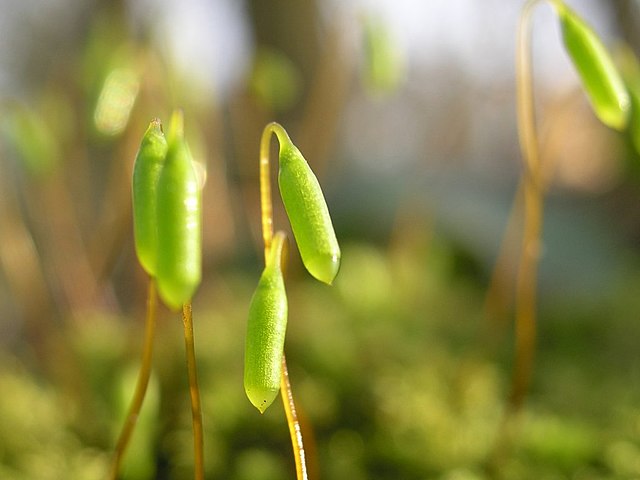In seed plants, the ovule is the structure that gives rise to and contains the female reproductive cells. It consists of three parts: the integument, forming its outer layer, the nucellus, and the female gametophyte in its center. The female gametophyte — specifically termed a megagametophyte — is also called the embryo sac in angiosperms. The megagametophyte produces an egg cell for the purpose of fertilization. The ovule is a small structure present in the ovary. It is attached to the placenta by a stalk called a funicle. The funicle provides nourishment to the ovule. On the basis of the relative position of micropyle, body of the ovule, chalaza and funicle, there are six types of ovules.
(a) Orthotropous ovule - the micropyle, chalaza and funicle all lie in the same straight line, this is the most primitive type of ovule.
Eg: Piper, Polygonum and Cycas.
Models of different ovules, Botanical Museum Greifswald
A sporangium ; pl.: sporangia) is an enclosure in which spores are formed. It can be composed of a single cell or can be multicellular. Virtually all plants, fungi, and many other groups form sporangia at some point in their life cycle. Sporangia can produce spores by mitosis, but in land plants and many fungi, sporangia produce genetically distinct haploid spores by meiosis.
Photomicrograph of a mature sporangium of an Absidia mold
Moss sporangia (the capsule and the stalk/seta make up the diploid asexual sporophyte generation)
Sporangia (clustered in sori) on a fern leaf
Scanning electron micrograph of fern leptosporangia





